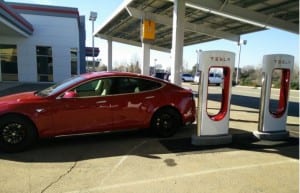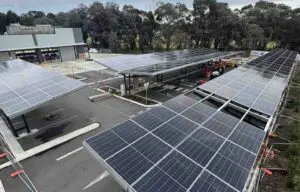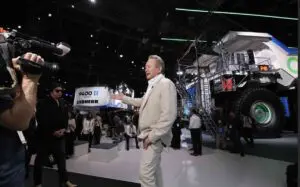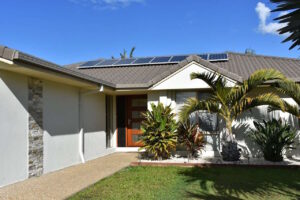At the Tesla shareholder meeting last night, in response to a question from the floor, Elon Musk said that Tesla would not make motorcycles.
The company’s founder and CEO explained that he was nearly killed riding a motorcycle at the age of 17, after he graduated to motorcycles from catching the bus to school. And so motorcycles were not part of Tesla’s plans.
On the other hand, Musk said ‘yes’ to quite a few things, too:
– Third generation superchargers would, wherever possible, include solar and storage to enable them to operate off-grid. They would thus deliver uninterrupted service, “even during a Zombie Apocalypse”.
– The current global network of 10,000 superchargers would be massively expanded to enable an EV to get from anywhere to anywhere.
– Superchargers would have more power, which would enable a driver to recharge even faster. On a long-distance trip, this translates into the time it takes to go to the washroom and get a coffee.
Musk told the meeting that Tesla’s long-distance driving recharging goal was 10:1 driving time to charging time, or five hours of continuous driving for 30 minutes of charging.
In response to a question from animal rights group PETA, he confirmed that there would be a no-leather “vegan” option on all Teslas, and that even current Teslas could be specially ordered with no leather on either the steering wheel or the seats.
In the medium term, Teslas would not have leather on steering wheels, mainly due to the absence of a steering wheel.
Some other product announcements:
The Nevada Gigafactory – which makes batteries for both mobile and stationery storage – would be expanded and would soon be “the largest building in the world.” As from next quarter, it would produce more batteries than all other manufacturers around the world, combined.
Each year, Tesla would produce more batteries per year than all previous years, combined.
A new gigafactory, with car assembly line alongside, would be built in the Shanghai Free Trade Zone and construction would start soon. The third gigafactory and assembly line would be built in Europe, with the country still to be finalised.
Ultimately, there would be around a dozen such complexes, worldwide. The working name for these complexes seems to be “Dreadnought”.
The Model 3 All Wheel Drive version would start production in 3Q2018.
The Model 3 base version (with smaller battery) would start production in 1Q19.
Model Y design would start in 1Q19, with production expected to start in 1H20.
A compact low-cost Tesla was also on the cards, within five years.
The Tesla Semi (prime mover) was already undergoing a design upgrade which would increase its range dramatically.
At its launch recently, its range was announced as 800km. It currently accelerates to 100 km/hour (unloaded), faster than a BMW 330i (5s vs 6.5s).
Next month, a free trial of the new AutoPilot would be downloaded to cars.
The current Roadster on the market is only the base version and future versions will go faster and would have some “SpaceX options”. (It sounds like a joke – but was it?).
The purpose of the Roadster was to eliminate the halo effect of petrol vehicles, by out-performing them in every respect.
Musk also said that one of the key competitive advantages of Tesla in the future would be its assembly line leadership. He said mistakes made on the Model 3 assembly line design were being removed and learnings would be applied to ensure that new production lines were the most innovative and advanced in the industry.
Tesla has also acknowledged that some tasks on the line are better suited to being done by people, rather than by automated workflow robots, and this understanding will be applied in the future, particularly with a view to eliminating repetitive stress injuries and improving worker safety.
Battery product claims:
Tesla says its batteries are showing the best bang for back in the world, in comparison with all competitors.
Tesla confirmed that they expected their cell cost to drop below $100 per kWh in 2018. This estimate was based on today’s price of commodities, with Cobalt currently trading at $90,000 dollars per tonne.
The amount of Cobalt being used in Tesla’s new batteries is also being reduced. Lithium supply appears to be secure and stable. (Australia has significant Lithium reserves).
Improvements in 2019 will result in the entire battery pack (including its cooling system) dropping below $100 per kWh. This will be supported by improvements to the anode and cathode, resulting in better energy density and cost.
Surprisingly, there was no mention of solid state batteries, other battery innovations or capacitors.
The 50,000 homes that are being connected in South Australia into a Virtual Power Station, using Tesla Powerwalls, will act as a model for the rest of the world to see distributed generation and storage displace the traditional top-down model.
In Puerto Rico, which had much of its infrastructure destroyed in Hurricane Maria last year, Tesla is installing more solar and storage than anywhere else in the world, which could make Puerto Rico the most advanced, energy-independent country in the world.










